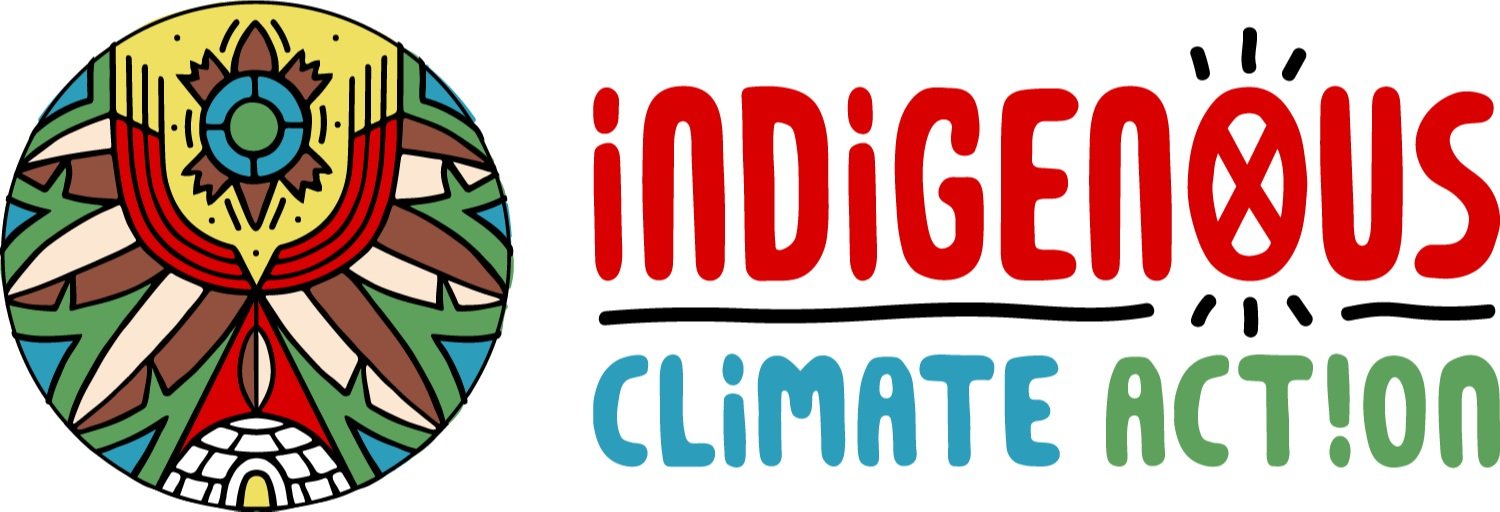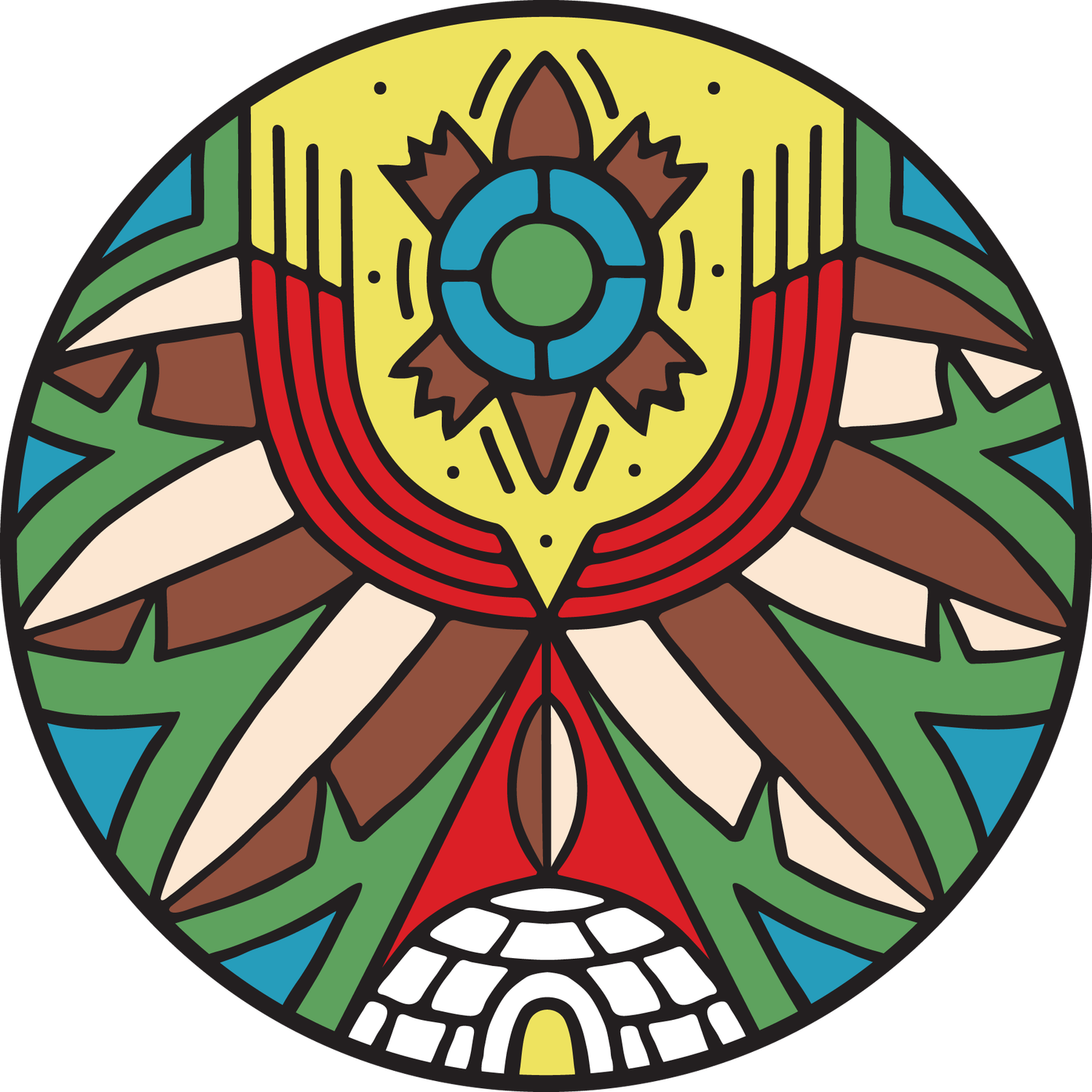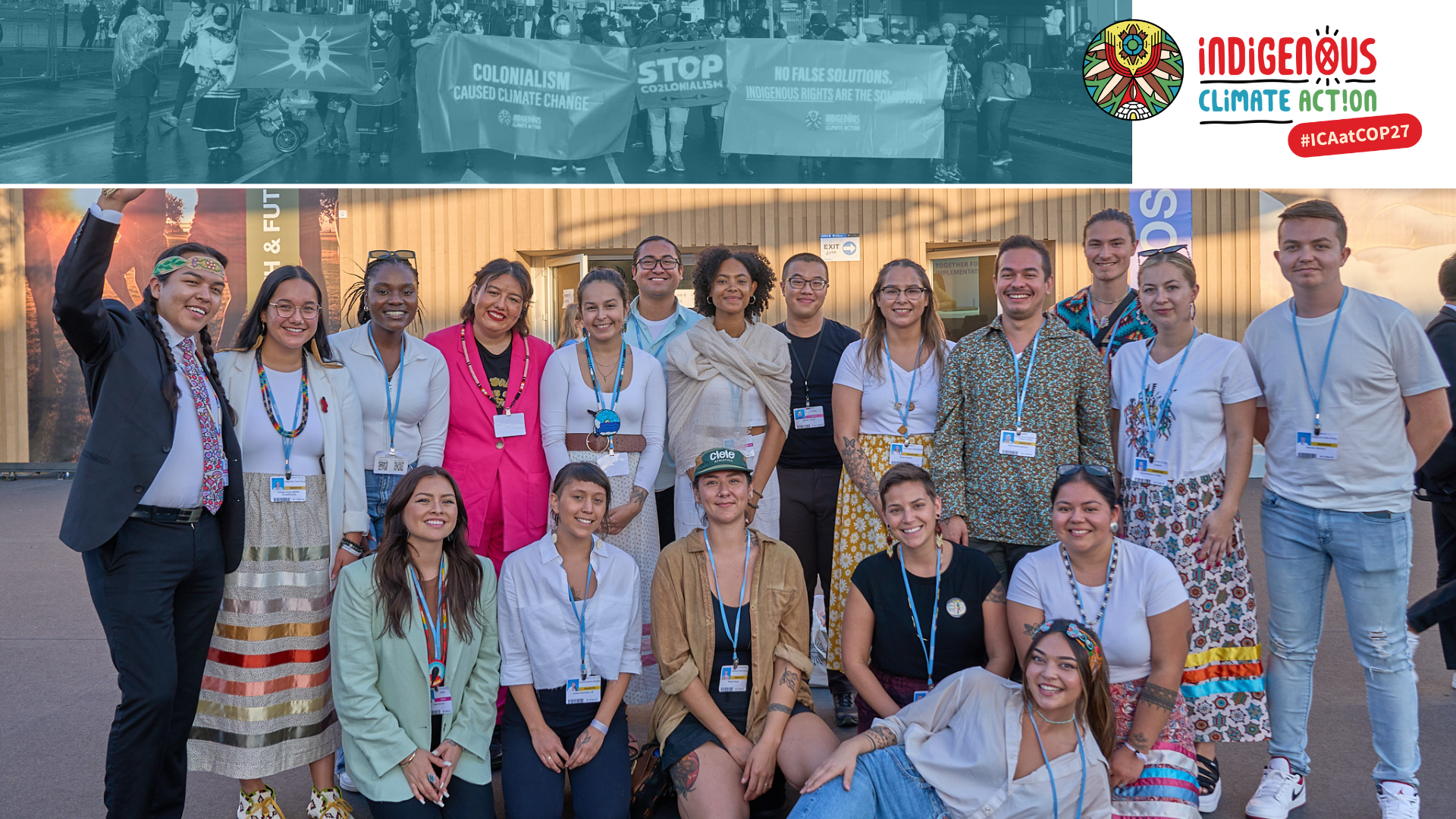“Youth voices matter!” Kahnawake Youth at COP27 and COP15
Indigenous youth have a unique perspective on climate change and serve as some of the most influential voices in the space. COP27 provided Indigenous youth a platform to share their knowledge and experience within the Indigenous Peoples Pavillion. Seven Kahnawake youth made their message clear - youth voices matter - and by centering youth voices, it can generate meaningful solutions by incorporating Indigenous knowledge, cultural practices, and values.
From left to right: Ohontsakéhte Montour, Dawson Horne, Iotshatenawi Reed, Braden Sonny White, Brandon Montour [Photo by Sage Goodleaf]
During their panel at the Indigenous Peoples Pavillion the Kahnawake Youth Climate Collective, also known as Iakwatonhontsanonstats meaning “we are protecting/safeguarding the earth”, spoke of the urgency to take action, highlighting their connection to land, listening to Elders in their community, and protecting the next seven generations. "Our youth is our future, our actions affect the next generation and the ones not born yet. It's not just us; it's time we listen to Indigenous youth”, said Iotshatenawi Reed. These youth have set a precedent for an increased focus on giving Indigenous voices a platform of relevance within international conversations about climate change.
Centering Indigenous youth voices in the process of policy changes can help generate insightful and sustainable solutions that incorporate Indigenous communities' knowledge, science, and values. These solutions will prove better long-term investments for our earth, as they will avoid falling into the trap of false promises or quick fixes that ultimately create more problems down the line. Instead, they allow us to consider Indigenous perspectives and how societal policies have negatively impacted local communities, "Indigenous people are underrepresented, and we are the ones that are the most impacted," explained Brandon Montour. By recognizing that Indigenous rights are part of the solution to climate change, we take a necessary step in developing action plans that involve minimizing human environmental impact while restoring land and resources. Dawson Horne tells us “...We need more [climate action] promotion in the schools. Finding new ways with technology to bridge connections between ideas and youth in a unique way that can connect to them.” Each of the delegates mention that technology can play an increasingly important role in helping create new ways for Indigenous people to bring awareness to their challenges through traditional platforms and by inspiring the next generations through schools. When asked about the best way to engage with youth Iotshatenawi Reed replied, "There needs to be more awareness in the schools and community; I feel like social media would be the best platform." With this approach, we build a strong foundation for increasing awareness.
“...We need more [climate action] promotion in the schools. Finding new ways with technology to bridge connections between ideas and youth in a unique way that can connect to them.”
Kahnawake Climate Collective from left to right: Carlee Loft, Sha'teiohserí:io Patton, Sage Goodleaf, Ohontsakéhte Montour, Dawson Horne, Brandon Montour, Braden Sonny White, Iotshatenawi Reed [Photo from iakwatonhontsanonstats]
"When youth attend these events, they are the ones being spoken to, but they [youth] want to be the ones to speak," says Braden White. There has been a real commitment from youth to engage in leadership roles and take the initiative to become involved in larger climate movements such as attending COP27 in Sharm El Sheikh, Egypt and COP15 in Montreal, Canada. Take this youth group, for example - seven youths from Kahnawake, Canada, coming to engage and make change, hoping for a better future, “Don’t be afraid to speak up. You deserve to have your voice heard.” says Braden White. We can proudly say that youth have been breaking barriers and taking risks to increase youth involvement in more significant initiatives such as youth consultations, youth programs, youth employment strategies, and grassroots organizing.
Indigenous Climate Action (ICA) knows that investing in Indigenous Youth is the way forward to a sustainable future for humanity and the Earth. In 2020 Indigenous Climate Action released a Youth Needs Assessment which identifies the motivations, challenges, and solutions faced by Indigenous youth engaged in climate and Indigenous rights advocacy work. From the Youth Needs Assessment the Youth Leadership Council was born, centering the voices of Indigenous youth from across so-called-Canada; this council aims to provide a space for youth to gather and discuss important issues surrounding climate change initiatives they wish to contribute to, events they hope to attend that support their work. ICA works to serve the needs of youth who strive for climate justice, and Indigenous rights and sovereignty by providing resources and tools, our Climate Leadership Program (education and training), and providing funding opportunities; such as our Youth Wellness Honorarium, and the Youth Solidarity Support Fund for youth to create movement spaces that align with their personal and community goals.
Banner crafted by Kahnawake youth from the Kahnawake Survival School - a project by Carlee Loft and Julie Delisle
“Don’t be afraid to speak up. You deserve to have your voice heard.”
We need to include youth in decision-making processes within our communities by educating, mentoring, networking and allowing them to innovate with us. "We have youth who may not want to attend because they feel like progress can't be made. Progress won't be made overnight, you have to be focused on the long-term goal. If you are passionate, we will see progress made over time", said Brandon Montour, as an encouragement to other youth. To ensure these youth are not ignored or tokenized, we must make sure youth have meaningful roles in the community, raise awareness about the cycles that create inequality, and help ensure inclusion regardless of differences. The voices of Kahnawake's youth delegation will be crucial as we continue to demand stronger action on the climate crisis.
"We have youth who may not want to attend because they feel like progress can't be made. Progress won't be made overnight, you have to be focused on the long-term goal. If you are passionate, we will see progress made over time"
We are now at the end of week one of COP15 in Montreal, a bridge away from Kahnawake, where we experienced an unforgettable social event. Indigenous delegates representing nations around the world were welcomed into the longhouse for delicious meals created by local “aunties'” and incredible drumming, singing, and dancing. The international guests even gave us insight into their own customs - sharing songs from New Zealand's Haka culture, British Columbia's Tla'Amin region as well as stories from Amazonian communities. Ta´Kaiya Blaney from the Tla’Amin aptly described this heartwarming event: "being here [in the longhouse] is more like the United Nations than the actual United Nations'”. At the longhouse, youth were given the space to be themselves, share stories, and discuss climate movement spaces that they are involved in, or are passionate about uplifting.
We encourage all readers to stay informed and engaged on this crucial issue, to support Indigenous youth when you can by donating to their collective, amplifying their voices by following, sharing, and subscribing to them on any social media platforms. Inclusion and allyship are essential in this fight.
Feel free to get in touch with us if you want to get involved in any projects or find ways to support Indigenous youth delegates attending international conferences like COP27 and COP15.
About the Author
Angel Brant (she/her) was born in British Columbia and was given the name Kôna. Since being adopted, her heart lies with the Mohawks of the Bay of Quinte - Tyendinaga Mohawk Territory and identifies as Cree and Mohawk. She currently lives on the unceded traditional territories of the xwməθkwəy̓ əm (Musqueam), Sḵwx̱wú7mesh (Squamish), and səlilwətaɬ (Tsleil-Waututh) Nations.





